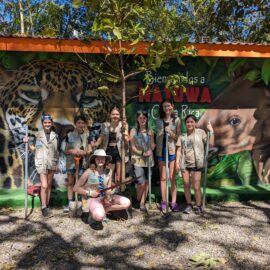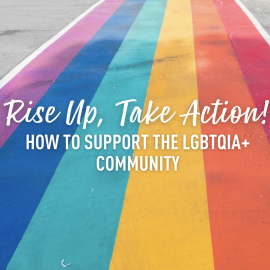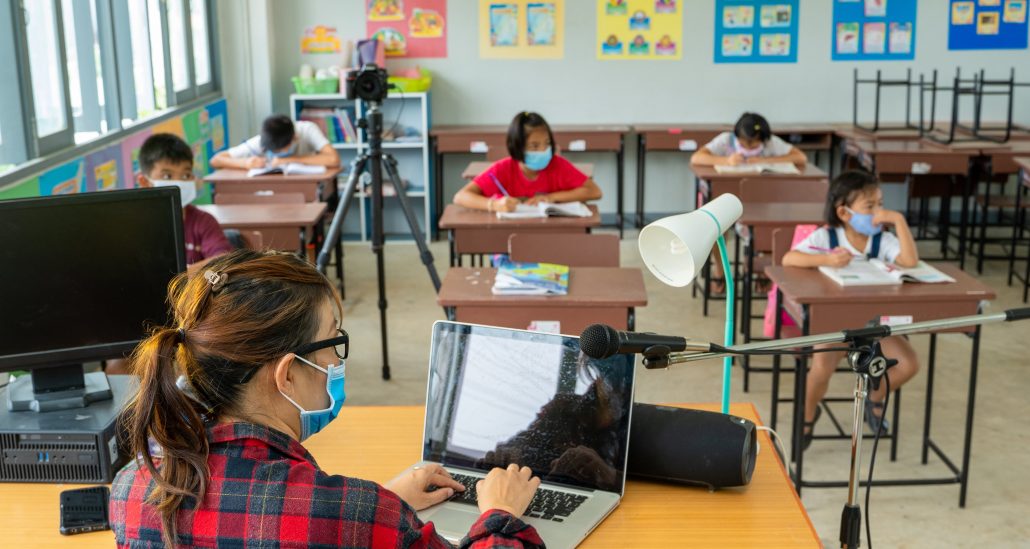Classroom Resources
Building a Positive Back-to-School Environment
As students and teachers start returning to school, the excitement around a school year together in the classroom is palpable. During the last two years, teachers lamented that their relationships with students suffered during periods of online and hybrid learning. Focusing on building relationships and a nurturing classroom community has never been more important. We’re offering suggestions for creating that environment for your students and a few other back-to-school tips.
It may be tempting to focus on the “learning loss” that is hot on everyone’s minds after so much time learning virtually. Academic standards and learning metrics are important, but so are life skills and social emotional learning. A lot of what is gained in school comes from socialization, collaboration, and learning from other students. Ensure that you are creating a positive and engaging community where students feel comfortable, included, and eager to learn. Take the time in the first month of school to sprinkle in ice breakers and team building activities so your students can get to know their classmates, discover commonalities, and build rapport. Looking for icebreakers that have been field tested by other educators? Cornell University’s Center for Teaching Innovation shared these ideas; the University of Florida’s Center for Teaching Excellence has these suggestions; and a recent Edutopia article encourages team building activities and provides suggestions. As students navigate these community experiences, be on the lookout for students who are anxious to be back in school and need extra support. Making time for your students to be together again and get to know each other will foster engagement, cooperation, and learning.
Building community is a great first step in creating a classroom environment where students are respectful and adhere to established rules. This may be particularly challenging this fall as some students have grown accustomed to learning in a makeshift workspace in a non-classroom environment. Many teachers encountered students and households that were not able to manage that independence effectively. Students are out of practice being in a classroom and being away from their peers, too! It is important to be direct and explicitly communicate practices and routines, expectations, and consequences (good and bad). Help students to re-learn school norms and procedures by consistently modeling and holding students accountable. An Education World blog post provides ideas for establishing classroom rules with your students at the start of the year, and Scholastic recommends starting with these six rules and adapting for your classroom. Facing History & Ourselves has compiled a variety of opening and closing routines that can help with community building and create a supportive environment. Patience is encouraged too! Everyone in the school community is out of practice and it will take time to settle back into the routines.
Teachers must also take the time to be reflective about what they have learned from the online and hybrid teaching experiences over the past year and a half. While some things didn’t work moving into the online or hybrid space, many of the strategies developed during this time should be maintained. Take the time to consider what practices and routines are worth using in the traditional classroom space. A National Education Association article reflects on lessons learned by the challenges of the pandemic and notes the most important take away is that educators are superstars (which we knew already!). A short video from Teach for America provides tips and encouragement as school reopen, and an Education Week blog asks teachers what they learned from distance learning that they want to continue using in a face-to-face setting. It will be valuable to help your students reflect as well! Asking students to share their ideas for how to best engage them in learning is always a good idea and may be more important this year in an effort to re-establish trust and community. Facing History & Ourselves has created a lesson plan to do just that and provides students with the opportunity to reflect on the previous school year in a similar fashion. Reflection is the key for teachers and students to make the most of their experiences and recognize areas for growth and improvement.
We encourage educators to build on the challenges that were exposed by distance learning models. The beauty of the academic calendar is that each fall teachers are given the opportunity to start fresh with a new set of students. A continuous improvement and life-long learning mindset are the best tools you can pack in your bag as you prepare to return to the classroom.
Related Articles

The 2024 WorldStrides Student Photo & Video Contest Gallery
As students and teachers start returning to school, the excitement around a school year together in the classroom is palpable. During the last two years, teachers lamented that their relationships wit...

Girl Scouts: Costa Rica Tour
As students and teachers start returning to school, the excitement around a school year together in the classroom is palpable. During the last two years, teachers lamented that their relationships wit...

2024 Mérida Pride Parade
As students and teachers start returning to school, the excitement around a school year together in the classroom is palpable. During the last two years, teachers lamented that their relationships wit...

Rise Up, Take Action: How to Support the LGBTQIA+ Community
As students and teachers start returning to school, the excitement around a school year together in the classroom is palpable. During the last two years, teachers lamented that their relationships wit...


